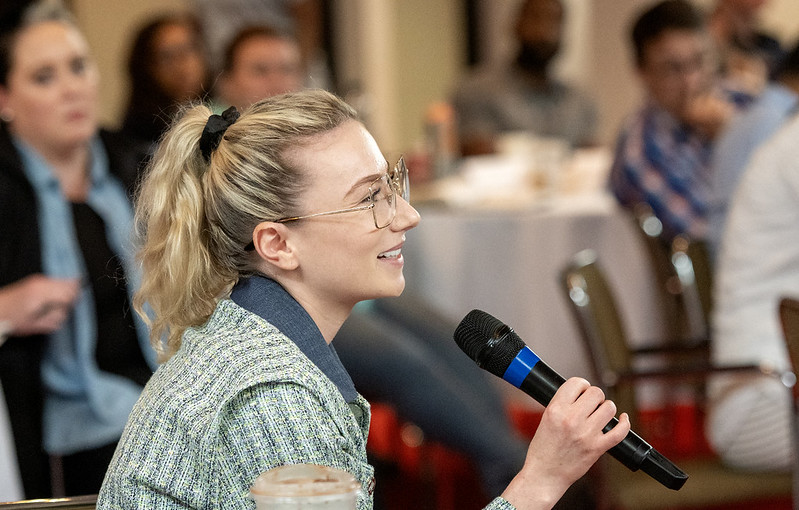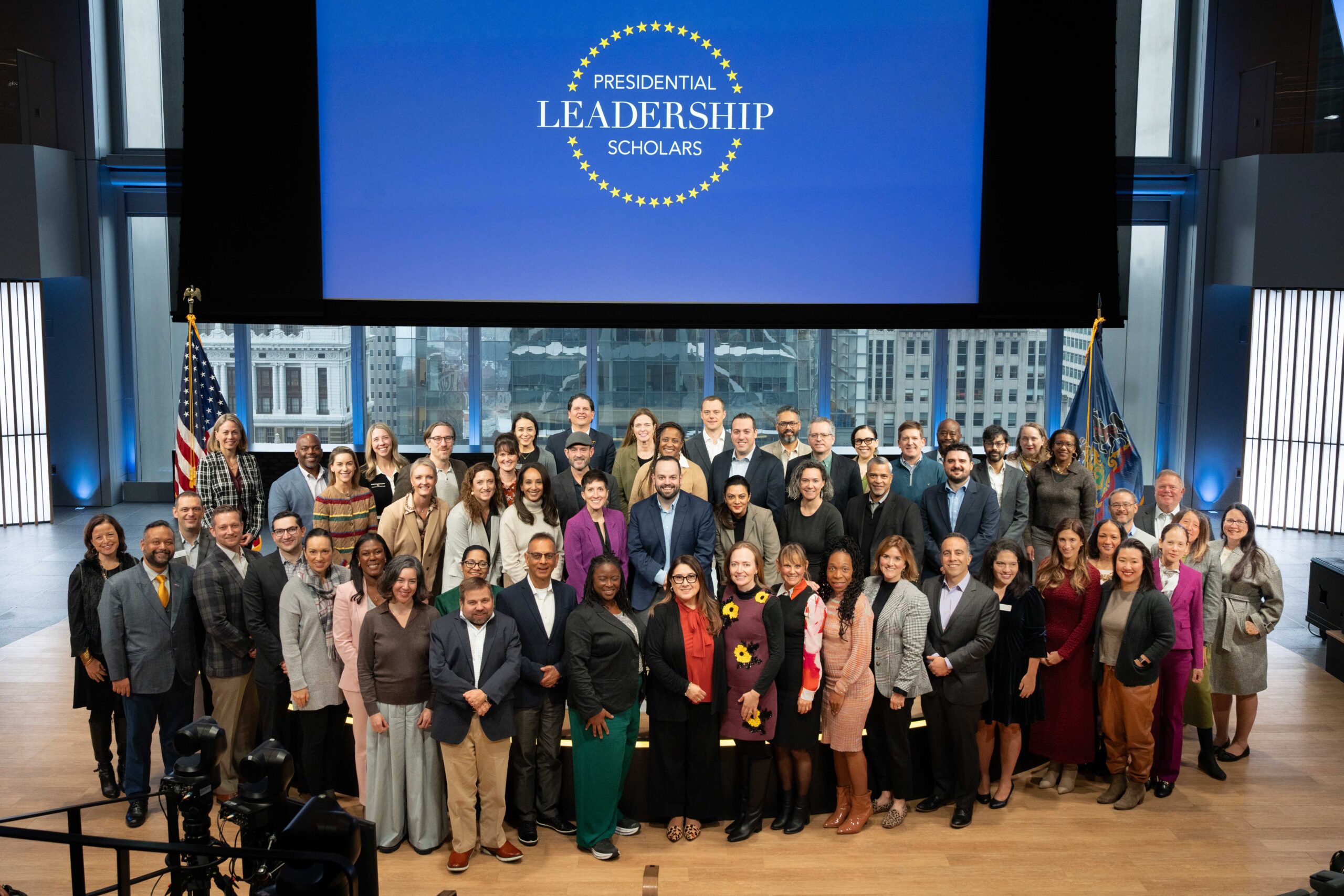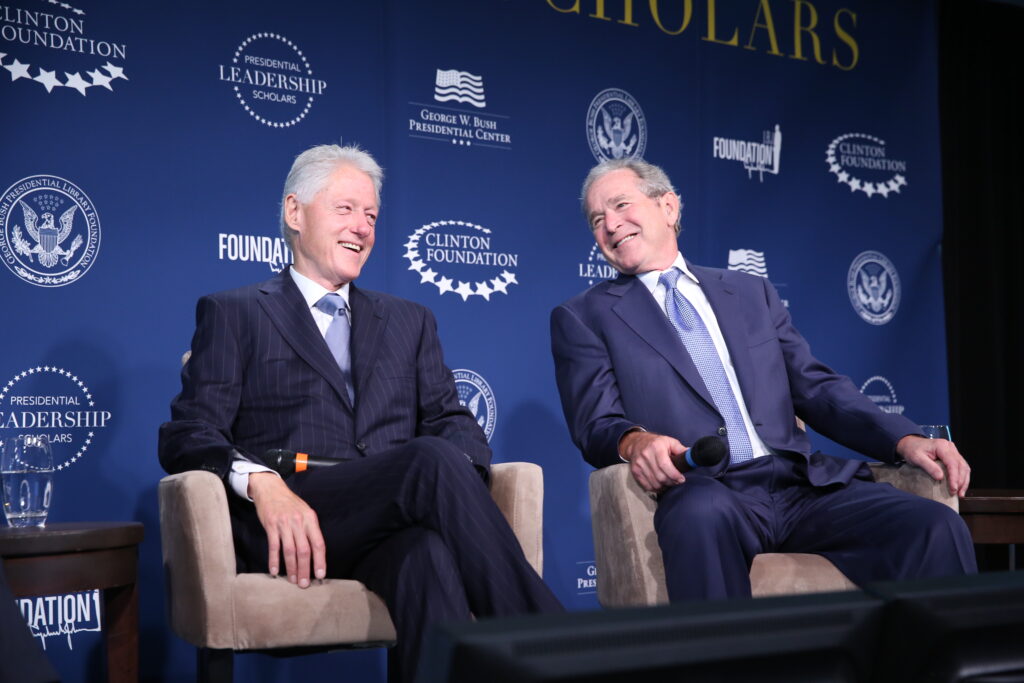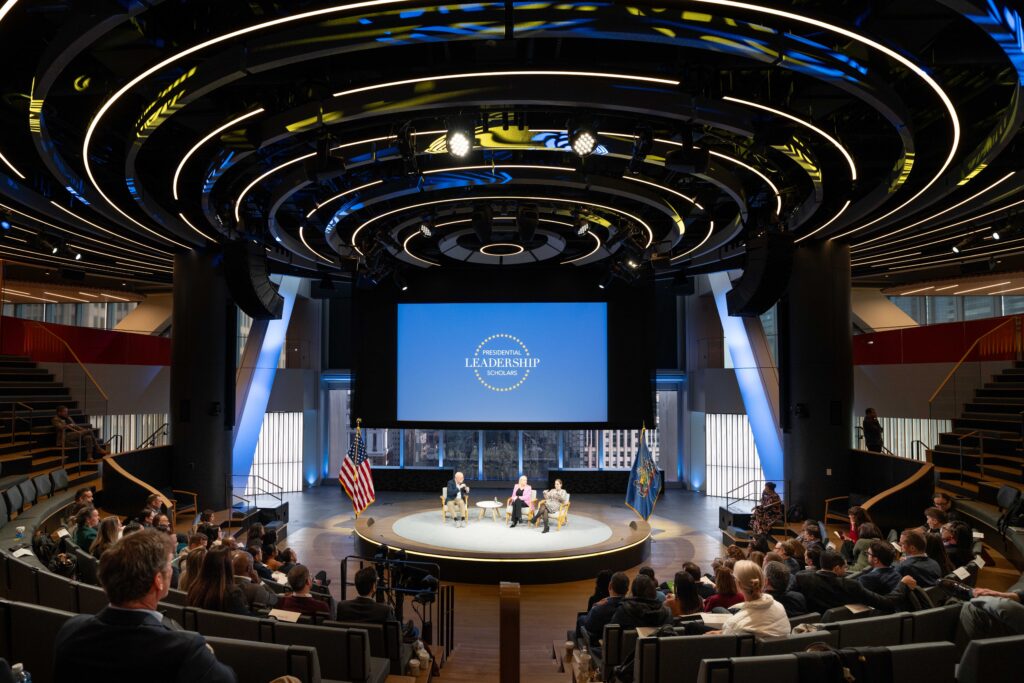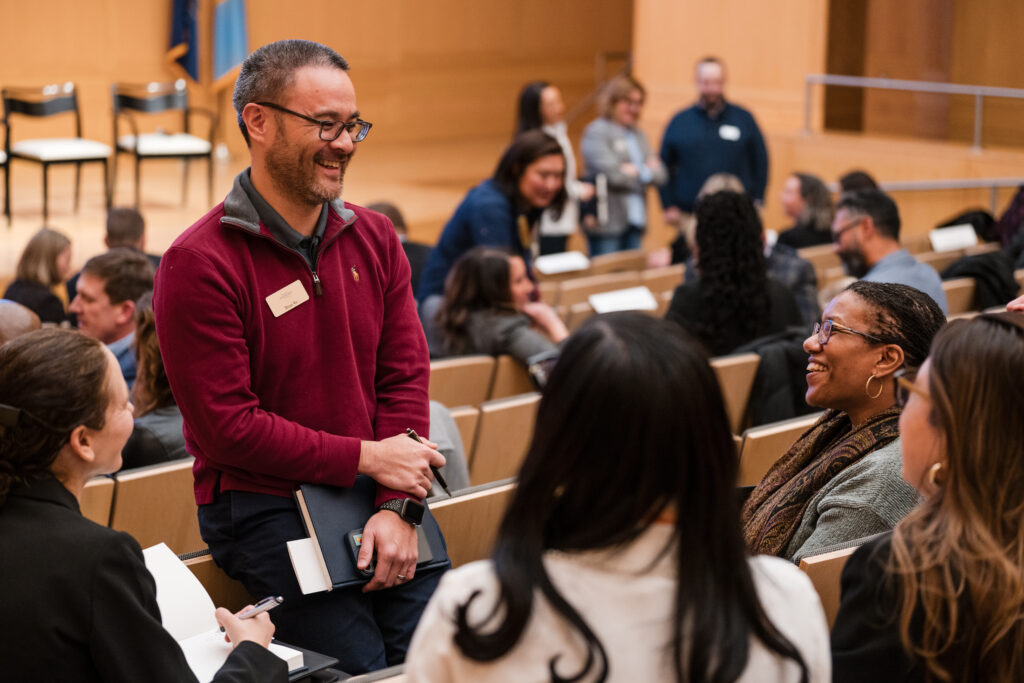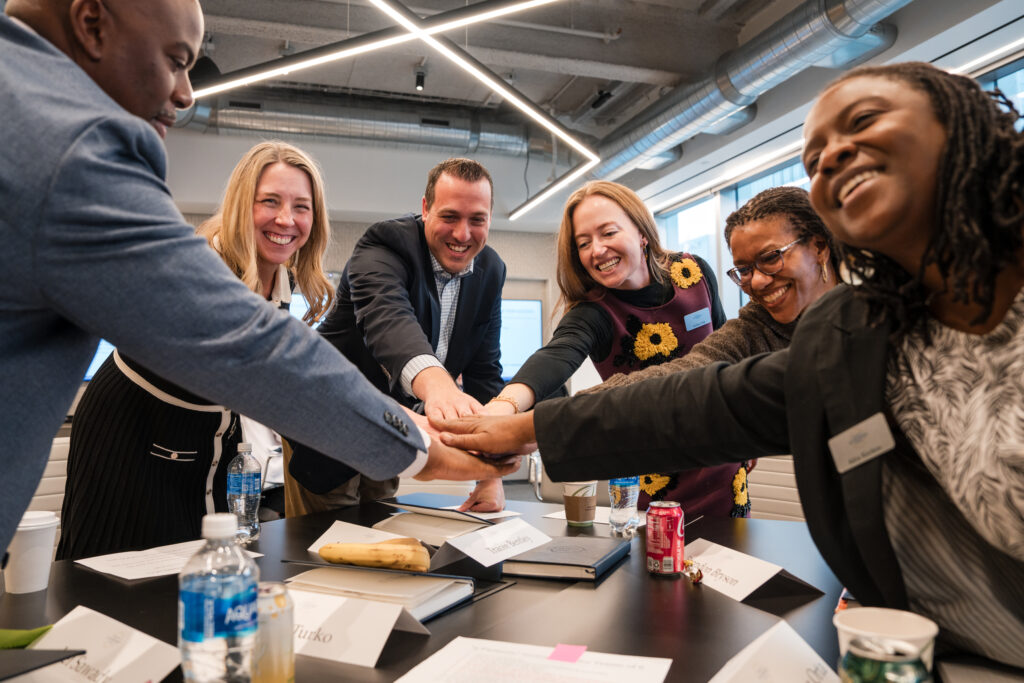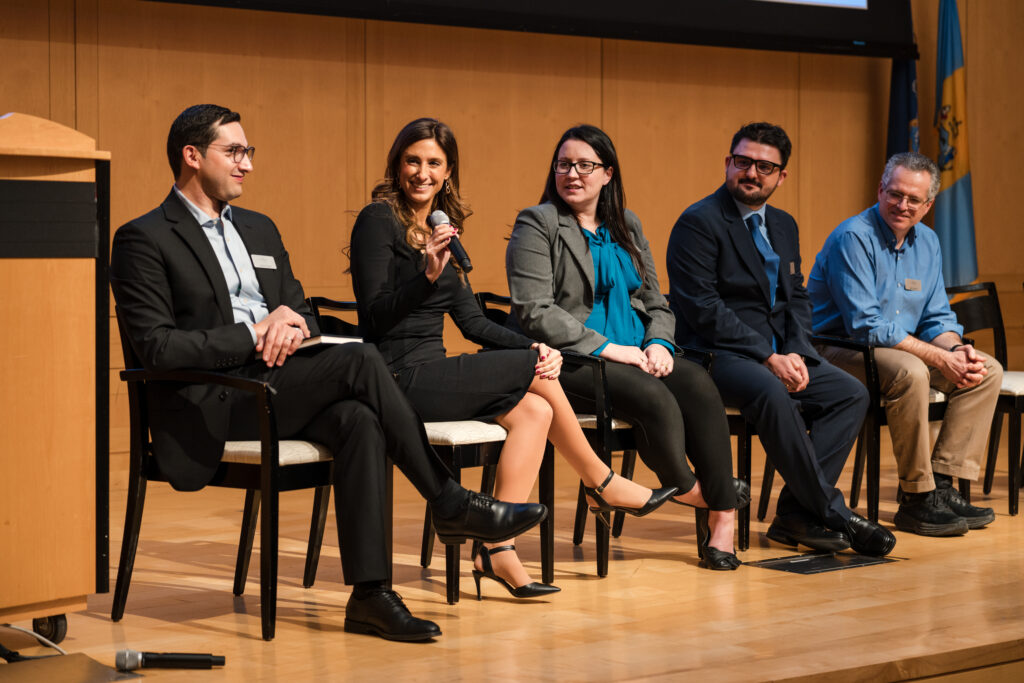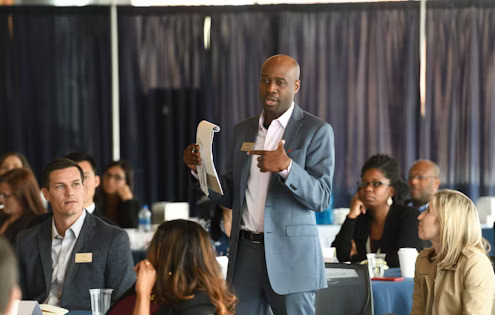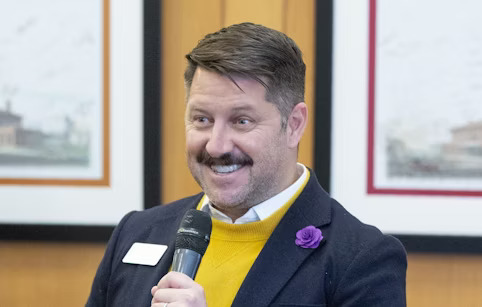Keely Cat-Wells is a 2024 Presidential Leadership Scholar and the Co-Founder and CEO of Making Space and Making Space Media, an organization that provides the necessary resources and opportunities for disabled people to create meaningful careers and become influential leaders. She shares her dedication to advancing the rights of disabled people and how the Presidential Leadership Scholars Program impacted her ability to lead and collaborate in meaningful ways.
Please tell us a little bit about yourself and your personal leadership project.
I am a disability rights advocate and CEO of Making Space. I became disabled at 17 and have since dedicated my career to advancing the rights of disabled people. After moving to the United States, I lost a job in the creative industries due to disability discrimination, an experience that led me to build my first company, C Talent, a talent agency representing disabled creators. C Talent increased disability representation in the media and reshaped perceptions of disabled people. In 2022, it was acquired in a landmark deal, marking a major investment in disabled talent and a milestone for the creative industries.
Following the acquisition, I set out to address the global unemployment crisis for disabled people at scale. What began as my personal leadership project is now my company, Making Space. Making Space is a talent acquisition and learning platform built by and for disabled professionals, connecting employers with a highly qualified, innovative, and often-overlooked talent pool. We provide free, accessible courses, career development programs, and pre-vetted job opportunities for disabled individuals to help them achieve their career goals.
Making Space has supported the employment journeys of roughly 3,000 disabled people so far, and we have recently launched our inaugural Ascend program, a 10-month workforce development initiative, with support from the GitLab Foundation.
I also partnered with disability rights advocate Sophie Morgan to co-create Making Space Media, where we produce film and TV that centers on disabled voices. We have secured a first-look deal with Reese Witherspoon’s Hello Sunshine media company. Our first documentary, Fight To Fly, is a campaign film that exposed the inequalities disabled travelers face, triggering policy reform and establishing a working group to advise the U.K. government.
Please give us an update on what you have been working on since completing the Presidential Leadership Scholars program.
After completing the Presidential Leadership Scholar program, I was honored to be one of two advocates selected for the Gloria Steinem Fellowship, where I had the privilege of learning from Gloria and working from her historic home, a space that has long served as a gathering place for organizers, activists, and scholars. As part of the fellowship, I convened a talking circle with Gloria and an extraordinary group of women to discuss strategies for advancing intersectional equity and advocacy in the face of the challenges ahead. Gloria has taught me that life is an ongoing operations challenge and that true progress happens when we sit together, communicate openly, and listen deeply.
Thanks to fellow Scholar Todd Mosher, Making Space had the honor of helping to facilitate a two-day workshop for the airline and space industries at Blue Origin, shaping the future of accessible travel both on earth and in space, covering on subjects from employment, cabin accessibility, commercial space travel, and accessible lavatories on airplanes. We were also able to screen Flight to Fly at the Museum of Flight in Seattle.
On the advocacy side, I have remained vocal on key issues, including ending and phasing out subminimum wages for disabled workers. I wrote an op-ed for TIME Magazine on this issue. Additionally, I have been working on advocating for increased inclusive disaster preparedness for disabled people, particularly following my personal experience evacuating during the LA fires, which highlighted the systemic disparities in emergency response.
Which lessons learned during the Presidential Leadership Scholar Program have stayed with you the most, and how have you put them into action?
One of the most valuable lessons I took from the Presidential Leadership Scholars Program was the power of building bridges across diverse perspectives, particularly across party lines. I’ve put this into practice by actively engaging with government leaders, corporate executives, and community advocates to understand different viewpoints. This has enabled me to build coalitions, secure buy-in from unexpected yet influential decision-makers, and drive initiatives forward at an accelerated pace.
Another profound lesson I’ve learned is that no one has to navigate the work we do or the complex lives we live alone, without people who deeply care and understand. There will always be someone to lean on when needed. My PLS class has been a constant source of support since day one, and I can’t fully express how meaningful, transformative, and life-changing that has been.
What drives your work advocating for disability rights in LA and abroad, and what is your advice for people with a disability who are seeking out career opportunities?
What drives my work advocating for disability rights, both in LA and globally, is the fundamental belief that disabled people deserve equity, access, and opportunity in every space. And companies, governments and organizations are missing out on a huge amount of talent by not creating systems and infrastructure that are accessible (beyond compliance!). I’ve experienced firsthand how systemic barriers keep disabled people locked out of industries, and I refuse to accept that as the status quo.
For disabled people seeking career opportunities, my biggest piece of advice is to recognize the value in the skills you’ve developed from your unique lived experience. The problem-solving, adaptability, and logistical expertise that come often from navigating an inaccessible world are assets in the workforce.
Seek out organizations that prioritize accessibility from the outset, not as an afterthought. And if a door doesn’t open for you, don’t be afraid to build your own. There is incredible power in disabled-led innovation.
Can you talk more about your involvement with the Olympics and Paralympics and what your participation will be when the Olympic and Paralympic Games come to LA in 2028?
For the 2024 Paris Games, Making Space worked with NBC to ensure a historic increase in disabled talent working on the broadcast. Now, as we look toward the 2028 Olympic and Paralympic Games in Los Angeles, my work has evolved to focus on ensuring that the event leaves a lasting legacy of accessibility for the city. I’ve been pushing for systemic change in infrastructure, employment, and transportation, with an emphasis on permanent solutions rather than temporary accommodations that vanish after the Paralympic closing ceremony.
However, our city faces the challenge of rebuilding after the devastating wildfires. These fires have exposed the same systemic failures that have long plagued our disaster response and urban planning, failures that disproportionately harm disabled people. Evacuations remain inaccessible, para-transportation is unreliable or nonexistent in emergencies, and recovery efforts rarely prioritize those who need the most support.
As we rebuild and prepare to host the Games (among other major events in between including the FIFA World Cup), we have an opportunity to correct longstanding inequities by embedding universal design into city planning, enforcing accessibility standards, and ensuring that disabled voices are embedded within the process. LA28 can and should be a catalyst for lasting change and a turning point for a more accessible Los Angeles.
